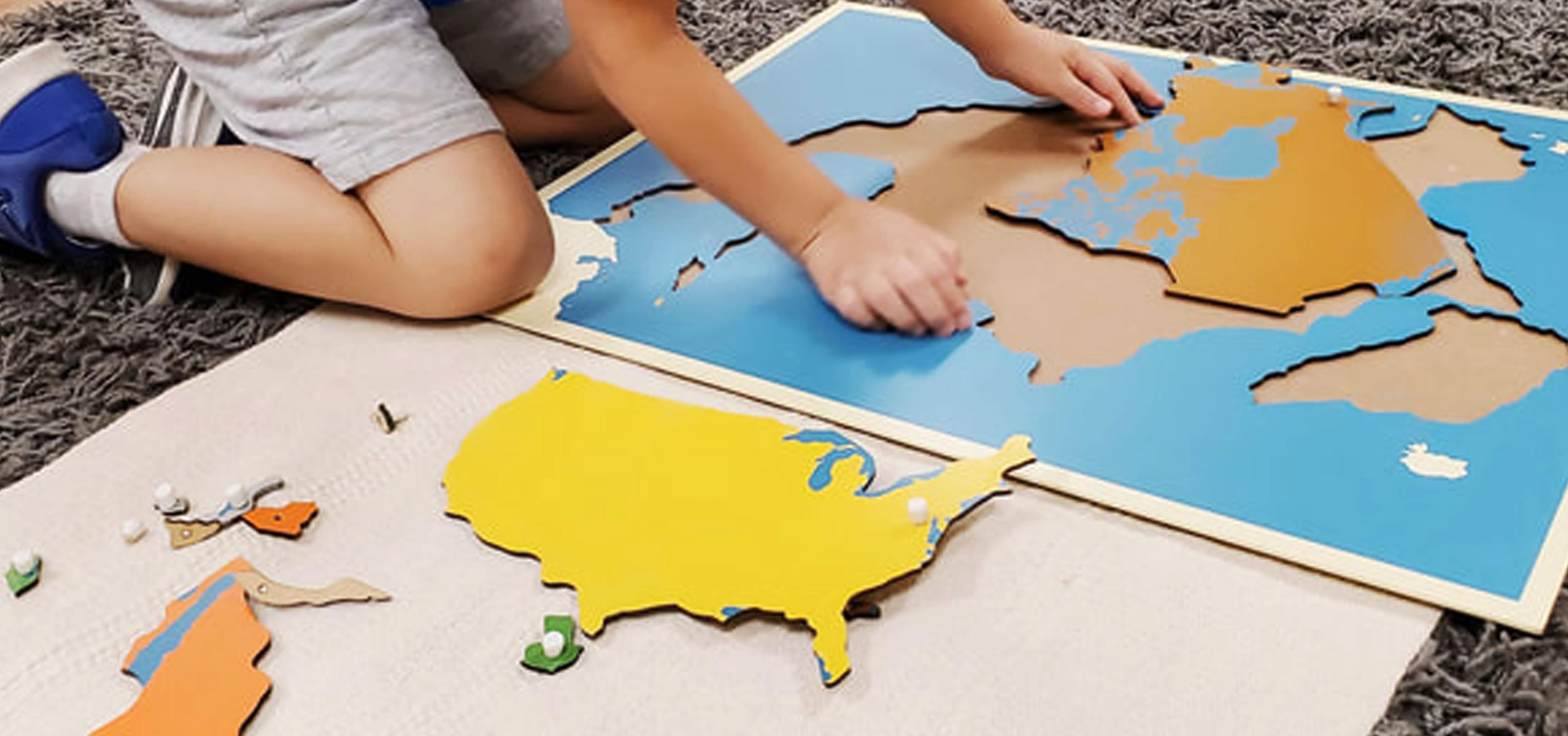Puzzle maps are an essential tool used in Montessori education to teach children about the world. These maps are made up of individual puzzle pieces that represent different countries, states, or regions. They can be used to teach children about the geography of the world and the different cultures and people that inhabit it.
Overview of Puzzle Maps
Puzzle maps in Montessori are a set of geography-based puzzles that are designed to teach children about different countries, states, and regions around the world. These maps are made up of individual puzzle pieces that represent different areas, and they can be used to teach children about geography, topography, and cultural diversity. They can also be used to teach children about different animals and natural resources found in different parts of the world.
Puzzle maps come in a variety of forms, including world maps, continent maps, and country maps. The puzzle pieces are usually made from wood or cardboard and are designed to fit together in a specific way. Each puzzle piece is shaped like the country or region it represents, and it is coloured and labelled to make it easy for children to identify.

The Benefits of Using Puzzle Maps in Montessori
- Hands-on Learning: Children can touch and manipulate the puzzle pieces, which helps them to understand the shapes and sizes of different countries and regions.
- Promotes Spatial Awareness: Puzzle maps help to develop children's spatial awareness and problem-solving skills. Children must figure out how the puzzle pieces fit together and where they should be placed on the map.
- Teaches Geography: Puzzle maps are an effective way to teach children about geography. Children can learn about the different countries, states, and regions of the world and the cultures and people that inhabit them.
- Promotes Cultural Understanding: Children can learn about the different customs, languages, and traditions of people from different parts of the world.
- Encourages Collaboration: Puzzle maps can be used as a collaborative learning activity. Children can work together to complete the puzzle map, which promotes teamwork and communication skills.
Incorporating Puzzle Maps into the Montessori Classroom
Puzzle maps can be incorporated into the Montessori classroom in a variety of ways. Here are some examples:
- Independent Learning: Puzzle maps can be used as an independent learning activity. Children can work on the puzzle map at their own pace and in their own time.
- Group Activities: Puzzle maps can be used as a group activity. Children can work together to complete the puzzle map, which promotes teamwork and communication skills.
- Geography Lessons: Puzzle maps can be used as part of a geography lesson. Teachers can use the puzzle map to teach children about different countries, states, and regions of the world.
- Cultural Lessons: Puzzle maps can be used as part of a cultural lesson. Teachers can use the puzzle map to teach children about different customs, languages, and traditions of people from different parts of the world.
Puzzle maps are an essential tool in Montessori education for teaching children about geography, topography, and cultural diversity. By using puzzle maps in a variety of ways, teachers can create a dynamic and engaging learning environment that helps children develop a deeper understanding and appreciation of the world around them.

